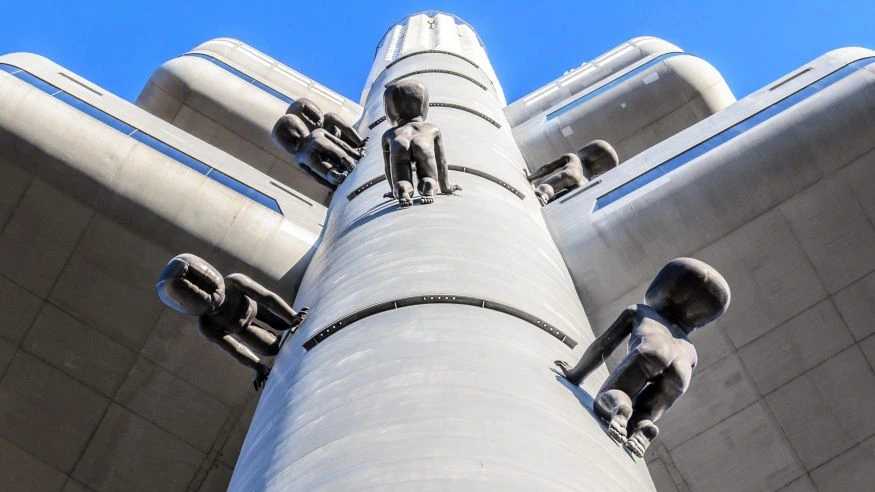St. Vitus Cathedral Prague is an awe-inspiring masterpiece of Gothic architecture and one of the most prominent landmarks in the city. This majestic cathedral, officially known as Katedrála svatého Víta, is the largest and most important church in Prague, serving as the spiritual symbol of the Czech nation.
Explore the Majestic St. Vitus Cathedral Prague, a Marvel of Gothic Architecture and Spiritual Significance. Discover its Rich History, Breathtaking Interiors, and Iconic Stained Glass Windows.
Note: This article contains affiliate links. In case you purchase something through one of these links, we may receive a small commission at no extra cost for you. Thank you for helping us keep creating the free content on this website!
The Brief History of St. Vitus Cathedral Prague
St. Vitus Cathedral Prague, located in Prague, Czech Republic, is a prominent landmark and one of the most important religious and cultural sites in the country. Its history dates back several centuries, and it has played a significant role in the development of Prague and the Czech nation.
The construction of the cathedral began in the 14th century, during the reign of King Charles IV, who desired to build a grand cathedral that would serve as the coronation site of Czech kings and queens. The cathedral was built in the Gothic architectural style, and it was intended to be a monumental representation of the wealth and power of the Kingdom of Bohemia.
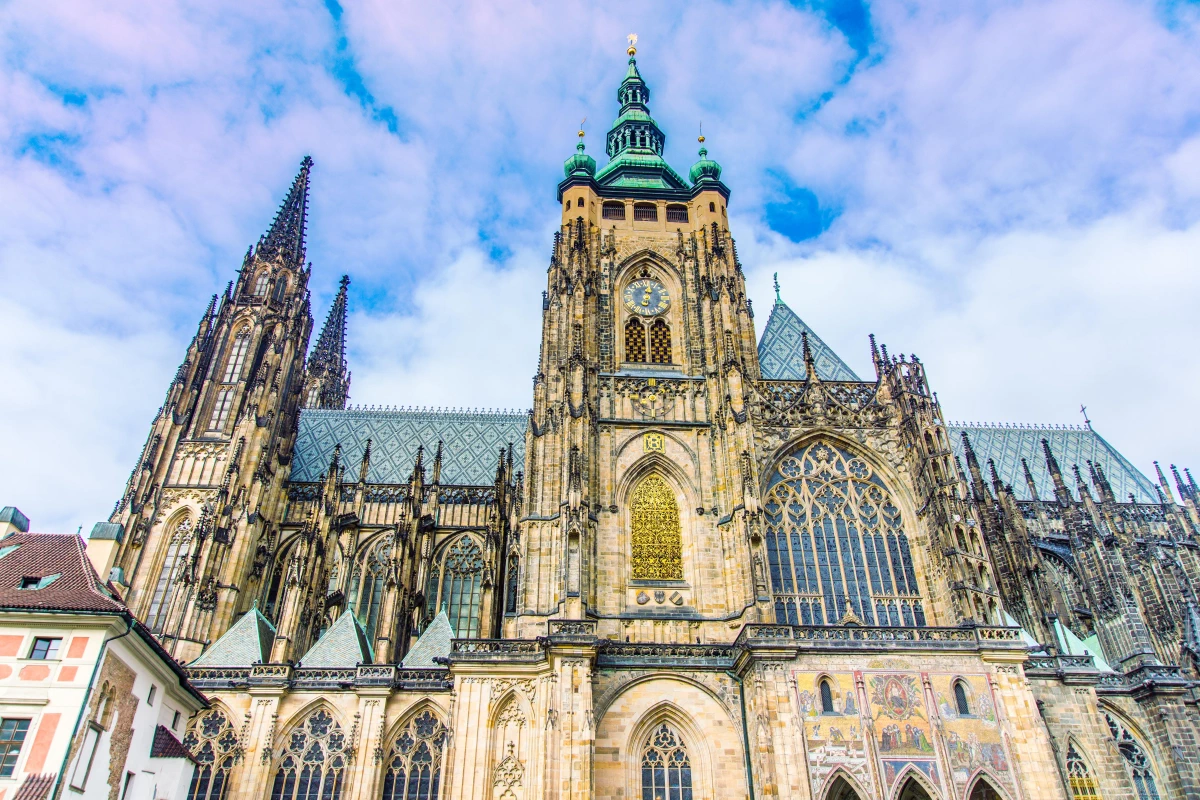
The initial phase of construction lasted for several decades, and it experienced various interruptions and delays due to financial constraints and other challenges. The main architect responsible for the early stages of construction was Matthias of Arras, who designed the eastern part of the cathedral, including the choir and the sanctuary.
After Matthias of Arras's death in 1352, Peter Parler, another renowned architect of the time, took over the project. Parler introduced his own artistic vision and made significant modifications to the original plans. Under Parler's leadership, the cathedral's most recognizable feature, the central nave with its soaring vaults, began to take shape. However, due to Parler's untimely death in 1399, the construction was once again halted.
For several decades, the construction of St. Vitus Cathedral remained in a state of stagnation. It was not until the 19th century that significant efforts were made to resume the construction and complete the long-awaited cathedral. In 1873, a competition was held to determine the design for the western facade, and the renowned Czech architect Josef Mocker emerged as the winner. Mocker's design was a blend of the Gothic and neo-Gothic styles, staying true to the original vision of the cathedral while incorporating some modern elements.
Construction work continued throughout the 20th century, and St. Vitus Cathedral finally reached its completion in 1929, more than 600 years after the initial construction began. The final stages of the cathedral's construction saw the involvement of several architects and artists who contributed to the interior design, stained glass windows, and decorative elements.
The cathedral has broken the record as the longest church to be developed. St. Vitus Cathedral took an incredible nearly 600 years to be completed fully (1344-1929).
Today, St. Vitus Cathedral Prague stands as a masterpiece of Gothic architecture, characterized by its intricate spires, stunning stained glass windows, and a rich collection of art treasures. It serves as the seat of the Archbishop of Prague and is also a popular tourist attraction, drawing visitors from around the world who come to admire its beauty, historical significance, and the breathtaking views it offers from its towers.
In conclusion, the history of St. Vitus Cathedral in Prague spans several centuries and encompasses the contributions of multiple architects and artists. It is a testament to the architectural prowess and cultural heritage of the Czech Republic, symbolizing the nation's rich history and religious devotion.
The Magnificent Legacy of St. Vitus Cathedral Prague
The city of Prague boasts a true gem of architectural splendor and religious significance: St. Vitus Cathedral. This magnificent structure stands tall as a testament to centuries of history, culture, and artistic excellence. Officially known as Katedrála svatého Víta, it is a cherished landmark and a source of national pride.
St. Vitus Cathedral Prague's legacy spans several centuries, with its construction commencing in the 14th century and continuing for over 600 years. The cathedral showcases a remarkable blend of architectural styles, primarily Gothic with elements of Renaissance and Baroque, reflecting the evolution of architectural trends throughout its lengthy construction period.
Gazing upon the exterior of St. Vitus Cathedral, one is greeted by a grand spectacle. The soaring spires, intricate stone carvings, and magnificent stained glass windows create a visually stunning façade that captures the imagination. The main entrance, adorned with bronze doors depicting biblical scenes, invites visitors into a realm of spiritual and artistic magnificence.
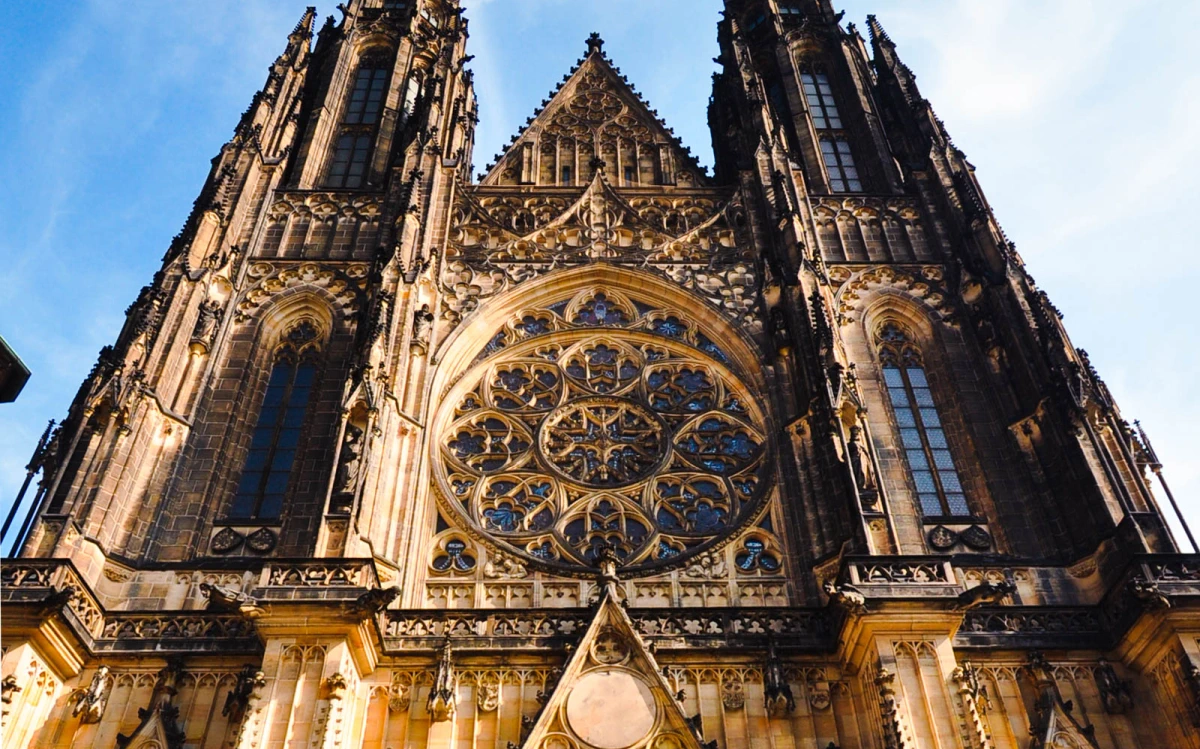
Once inside, the grandeur of the cathedral unfolds. The vast interior boasts soaring vaulted ceilings, intricate tracery, and a symphony of vibrant stained glass that bathes the space in ethereal hues. The nave and choir, with their majestic arches and meticulously crafted details, offer a sanctuary for contemplation and reverence. The ornate high altar commands attention, serving as a focal point for religious rituals and ceremonies.
The St. Wenceslas Chapel, nestled within the cathedral, is a marvel in itself. Dedicated to the patron saint of Bohemia, it is adorned with masterful frescoes and elaborate decorations, showcasing the artistic prowess of the era. The Royal Mausoleum, resting place of Bohemian kings and queens, provides a sacred space where history converges with spirituality.
Beyond its architectural and historical significance, St. Vitus Cathedral holds a place of cultural and artistic importance. It serves as a venue for concerts, organ recitals, and choral performances, where the soaring melodies harmonize with the cathedral's majestic acoustics, creating a profound and captivating experience for all who attend.
St. Vitus Cathedral's legacy extends far beyond its physical presence. It is intertwined with the Czech nation's identity and sense of pride. The cathedral has witnessed significant historical events, including coronations and religious ceremonies, leaving an indelible mark on the collective memory of the Czech people.
A visit to St. Vitus Cathedral is a journey through time, where one can marvel at the architectural magnificence, immerse oneself in centuries of history, and feel the spiritual resonance of this sacred space. It stands as a testament to the craftsmanship, dedication, and artistic brilliance of those who contributed to its creation. St. Vitus Cathedral truly embodies the soul of Prague, encapsulating the city's rich cultural heritage and serving as a lasting symbol of faith, resilience, and human ingenuity.
St. Vitus Cathedral Prague: part of the national heritage of the Czech Republic
St. Vitus Cathedral in Prague holds a revered place as part of the national heritage of the Czech Republic. As one of the most significant and treasured landmarks in the country, it represents not only architectural magnificence but also the deep cultural and historical roots of the Czech people.
Situated within the majestic Prague Castle complex, St. Vitus Cathedral stands as a testament to centuries of religious devotion, artistic excellence, and national identity.
The cathedral's importance to the Czech Republic cannot be overstated. It serves as the spiritual symbol of the nation, hosting significant religious events, coronations, and royal burials. St. Vitus Cathedral is dedicated to St. Vitus, the patron saint of Bohemia, further deepening its ties to Czech heritage and spirituality.Stepping inside, visitors are greeted by a breathtaking interior. The soaring vaulted ceilings, intricate stone tracery, and luminous stained glass create an atmosphere of tranquility and reverence.
The chapels within the cathedral, such as the St. Wenceslas Chapel and the Chapel of the Holy Cross, showcase remarkable craftsmanship and serve as repositories of historical and artistic treasures.The cathedral's significance as part of the national heritage extends beyond its architectural and religious importance. It stands as a symbol of Czech resilience and cultural identity, having witnessed pivotal moments in the nation's history. From the struggles for independence to the preservation of Czech language and traditions, St. Vitus Cathedral stands as a silent witness to the resilience and spirit of the Czech people.
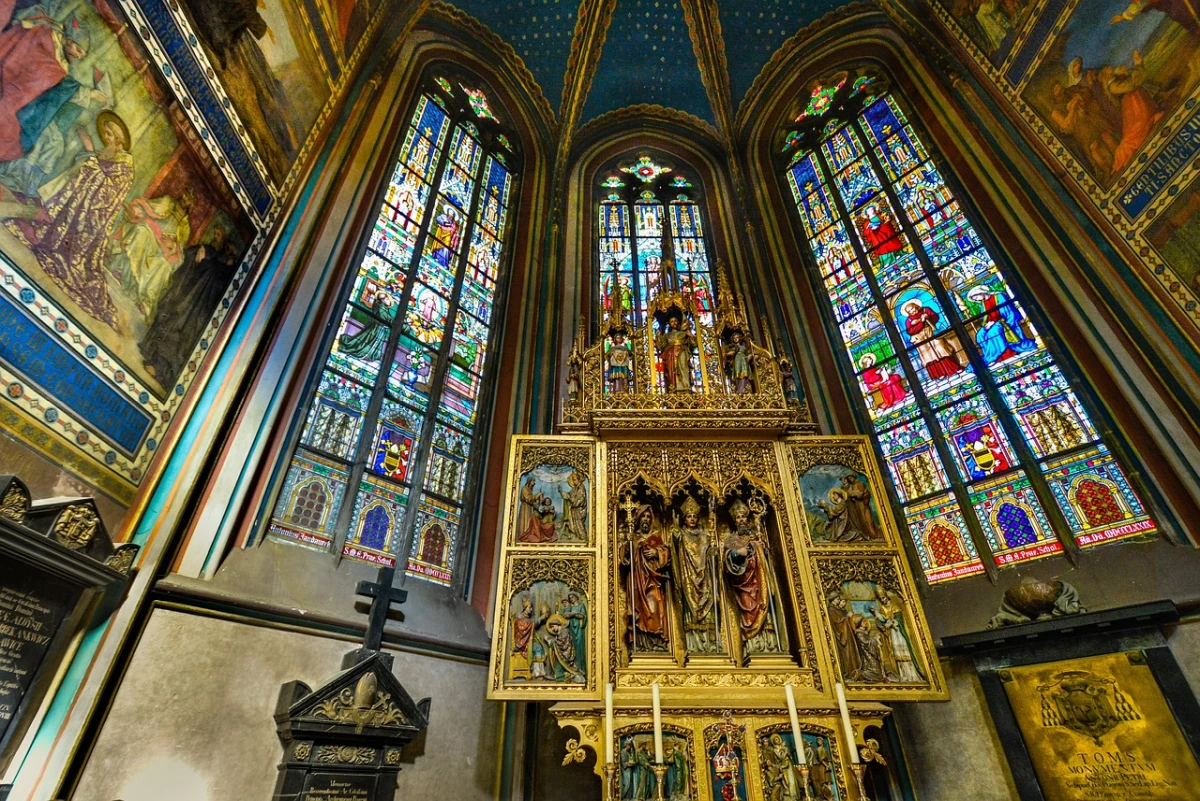
Today, St. Vitus Cathedral continues to inspire awe and captivate visitors with its beauty and historical significance. It serves as a sanctuary for spiritual reflection, a cultural and artistic center hosting concerts and exhibitions, and a cherished symbol of national pride. The cathedral stands as a living testament to the enduring legacy of the Czech Republic, inviting all who enter its hallowed halls to be immersed in the rich tapestry of Czech history and heritage.
A must see destination
St. Vitus Cathedral Prague stands as an undeniable must-see destination, captivating visitors from around the world with its breathtaking beauty and historical significance.
Beyond its architectural magnificence, St. Vitus Cathedral is steeped in historical significance. It has witnessed centuries of royal coronations, religious ceremonies, and important events in Czech history. Its walls echo with the footsteps of kings, queens, and countless faithful who have sought solace and inspiration within its sacred confines.Exploring the cathedral offers a glimpse into Czech culture and identity.
The St. Wenceslas Chapel, dedicated to the patron saint of Bohemia, showcases stunning frescoes and intricate details that speak of deep-rooted spirituality and national pride. The Royal Mausoleum, resting place of Bohemian kings and queens, serves as a poignant reminder of the nation's regal history.
Visiting St. Vitus Cathedral is a transformative experience. The sheer scale of the cathedral and the sense of reverence that fills the air leave a lasting impression on all who enter. Whether you are an architecture enthusiast, a history buff, or a seeker of spiritual solace, this extraordinary destination offers a profound connection to the past and a moment of reflection in the present.St. Vitus Cathedral is not merely a building; it is an experience that lingers in the hearts and minds of those fortunate enough to witness its grandeur.
It stands as a testament to the enduring power of faith, the beauty of architectural mastery, and the indelible connection between culture and heritage. For any traveler seeking to delve into the soul of Prague, St. Vitus Cathedral is an absolute must-see destination that will leave an indelible mark on their journey.
The Organ
Nestled within the historic walls of St. Vitus Cathedral, two distinct organ casings catch the eye, each with its own story. The upper casing, now merely a facade, whispers tales of a bygone era. Crafted in 1765 by the hands of Anton Gartner, it was home to a baroque marvel boasting 40 stops across 3 manuals and pedals. Yet, as time marched on, the organ itself vanished around 1909, leaving behind its ornate shell as a silent sentinel of the past.
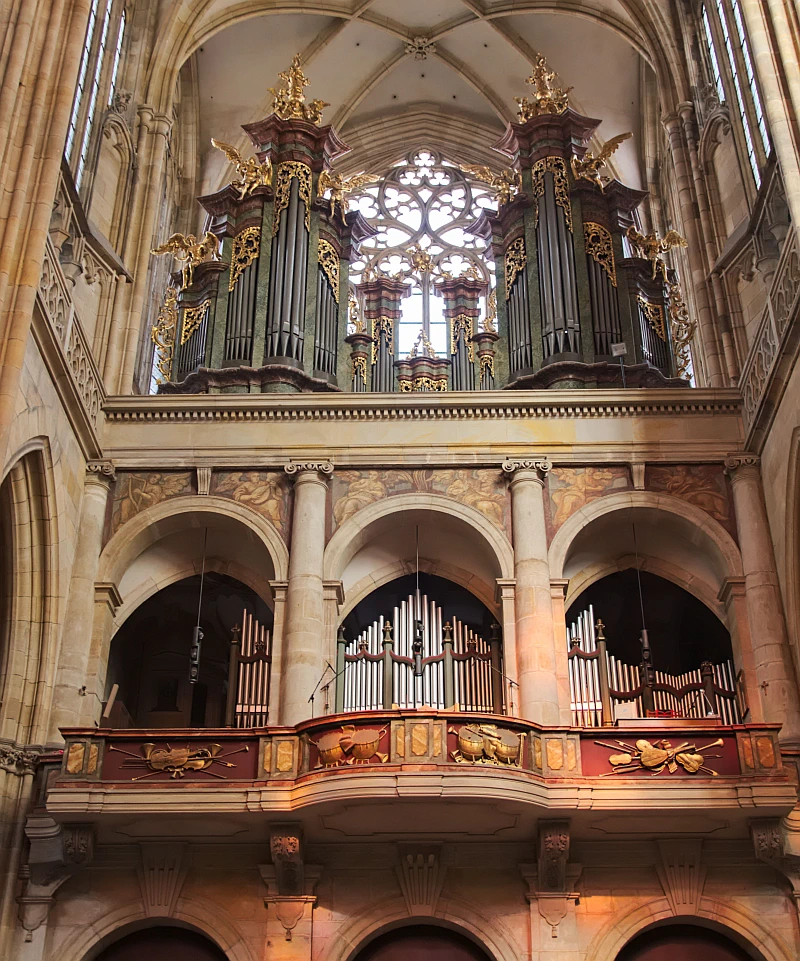
Beneath this ornamental relic lies the heart of the cathedral's musical soul - the main organ, encased in neoclassical splendor. Born from the craftsmanship of Josef Melzel between 1929 and 1931, this instrument underwent a meticulous rejuvenation by Brachtl and Kánský from 1999 to 2001. Despite its relatively humble presence within the grandeur of the cathedral's embrace, the organ boasts 58 stops, 3 manuals, pedals, and a chorus of 4,475 pipes. Its action, driven by pneumatic force, breathes life into a blend of flutes and principals, with a sparing use of reeds, crafting a gentle tone that echoes the nuanced emotions of post-Romantic artistry.
If you want to see something really beautiful visit the St. Vitus Cathedral Prague
If you're yearning to witness true beauty, a visit to St. Vitus Cathedral in Prague is an absolute must. This extraordinary architectural masterpiece is sure to leave you in awe with its grandeur, intricate details, and rich historical significance.
The Cathedral of St. Vitus in Prague, also known by its full Czech name Katedrála svatého Víta, Václava a Vojtěcha, is the primary church of the Prague Archdiocese. Situated at the heart of Prague Castle, this majestic cathedral holds immense significance as the most important church in Bohemia and serves as the final resting place for Czech kings.
Located in the third courtyard of Prague Castle, the Archbishop's Cathedral, also known as St. Vitus Cathedral (Katedrála sv. Víta), stands as the largest church in Prague. It holds immense historical and cultural significance, serving as the site of coronations for Czech kings and as their final resting place. The cathedral derives its name from St. Vitus, the patron saint of the Czech people, who met a martyr's fate at the tender age of 13 in the year 303.
Emperor Charles had a grand vision for the cathedral in Prague. It was not only intended to serve as the primary church of the newly established Archdiocese of Prague but also as a place of great significance and multifaceted purpose. In addition to being a main church, it was designated to be a coronation church, a family crypt, and a revered pilgrimage site devoted to St. Wenceslas.
The church stands as one of Prague's most notable and easily recognizable structures, commanding attention with its prominent location and distinct architectural style. It serves as an emblematic representation of Central European Gothic and neo-Gothic architecture, which flourished under the creative genius of the Parler family. The cathedral boasts its own orchestra, and a remarkably talented one at that. Whether you're an architecture enthusiast, a history buff, or simply someone seeking solace and inspiration, a visit to St. Vitus Cathedral promises an unforgettable experience. Its beauty transcends time and captivates the hearts of all who behold it.
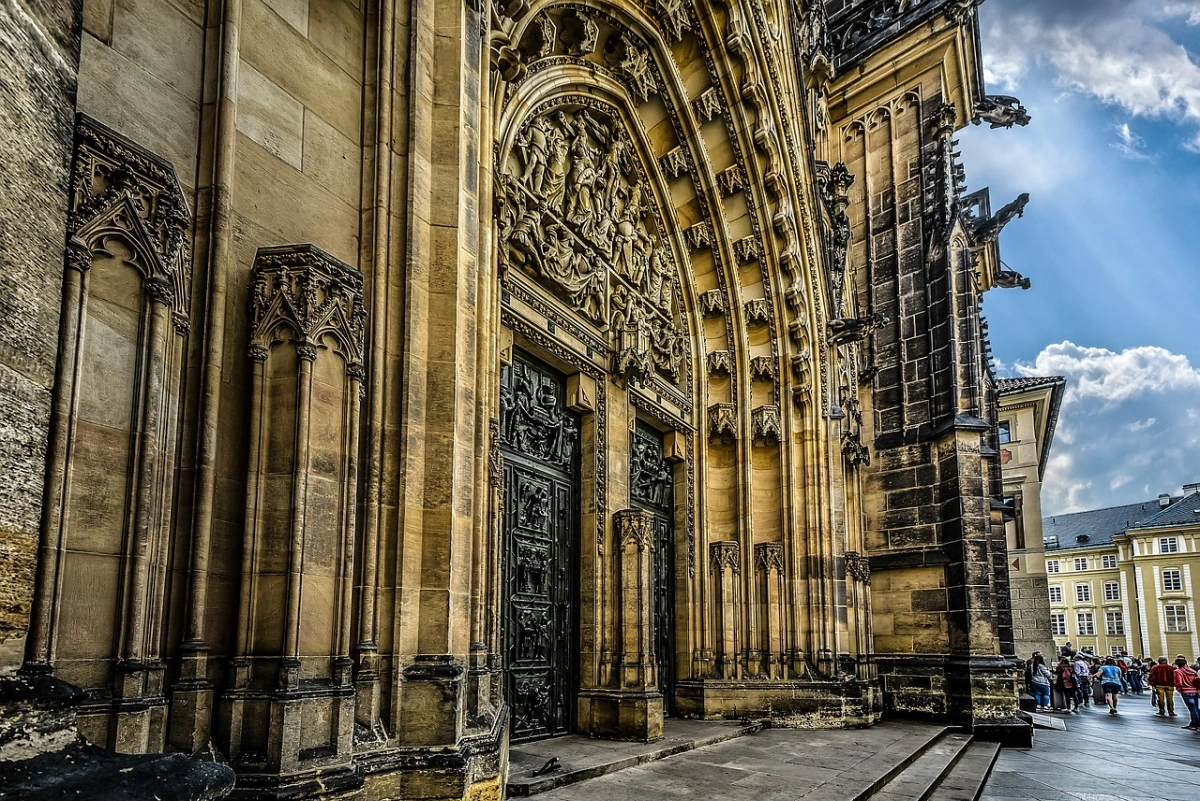
So, if you're in search of something truly beautiful, don't miss the opportunity to immerse yourself in the awe-inspiring ambiance of St. Vitus Cathedral in Prague. It is a sanctuary of architectural brilliance, a testament to the human spirit, and a destination that will forever leave an indelible mark on your soul.
Lookout tower and golden gate
Ascending the south tower of St. Vitus Cathedral is no small feat, with a total of 287 steps leading to its towering height of 96 meters. However, the breathtaking views that await at the top make every step worthwhile.
Wenceslas Chapel
Among the nineteen captivating chapels within the church, one stands out as a true masterpiece—the exquisite Wenceslas Chapel, crafted by the renowned architect Peter Parler. Adorned with semi-precious stones, it radiates a beauty that is truly unparalleled.
Connected to the chapel, the coronation jewellery chamber holds a precious treasure—the crown of St. Wenceslas. Crafted in 1346, this iconic symbol of power and sovereignty was first placed upon the head of the saint within the cathedral by Charles IV. Throughout history, it has been used for the coronations of various Czech kings, including the Habsburg monarchs. Its presence in the chamber adds to the allure and historical significance of this remarkable cathedral.
The entrance to the chamber is safeguarded by seven distinct keys, entrusted to the most esteemed dignitaries of the church and state. This exclusive access ensures the security and preservation of the chamber's treasures. While not accessible to tourists, a replica of the illustrious Wenceslas Crown can be admired at the historical exhibition housed within the old royal palace, offering a glimpse into its regal magnificence.
Photography in St. Vitus Cathedral
"The Treasury of St. Vitus’s Cathedral" exhibition strictly prohibits photography. However, in other parts of the Cathedral, photography and filming are permitted with the purchase of a license. This license allows for photography and filming exclusively without the use of flash, tripods, and any additional equipment, such as lighting. The license fee of taking photos is 50 CZK (about 2 EUR) (2024). For scholarly, documentary, cultural, and commercial purposes, exceptions to these rules may be granted by the Prague Castle Administration, provided that a written request is submitted and an agreement is reached.
Site location: III. nádvoří 48/2, 119 01 Praha 1-Hradčany
GPS coordinates: 50.090677, 14.399696
Google Photos: Click here
For more content and exciting articles, follow our site, where we regularly update our column to bring you the best ideas for events or things to do in Prague!


